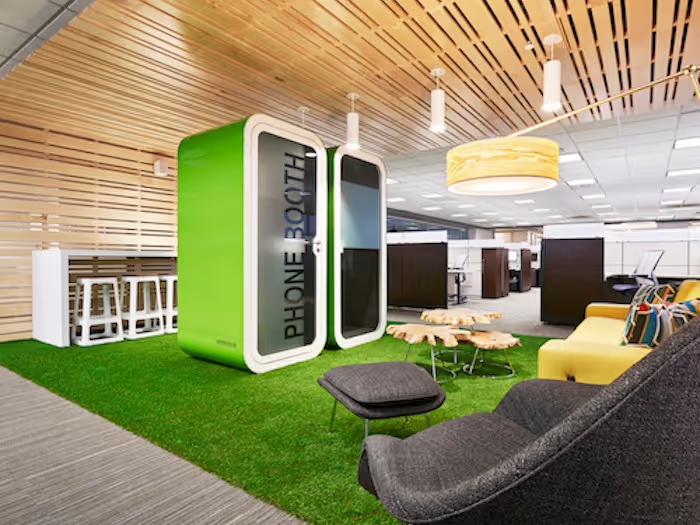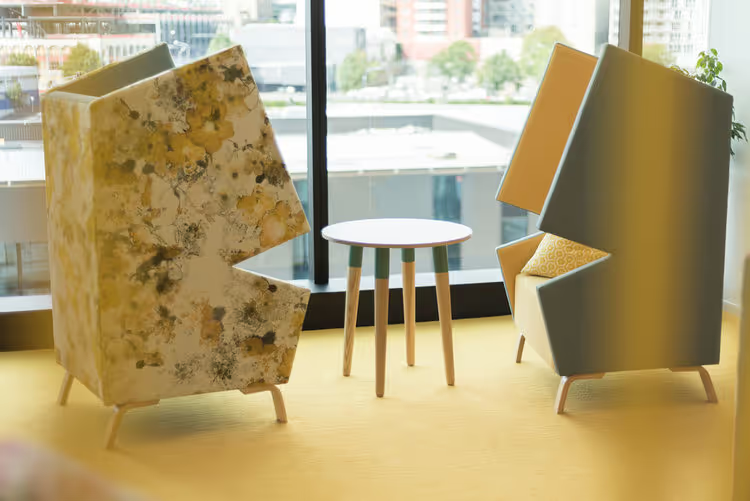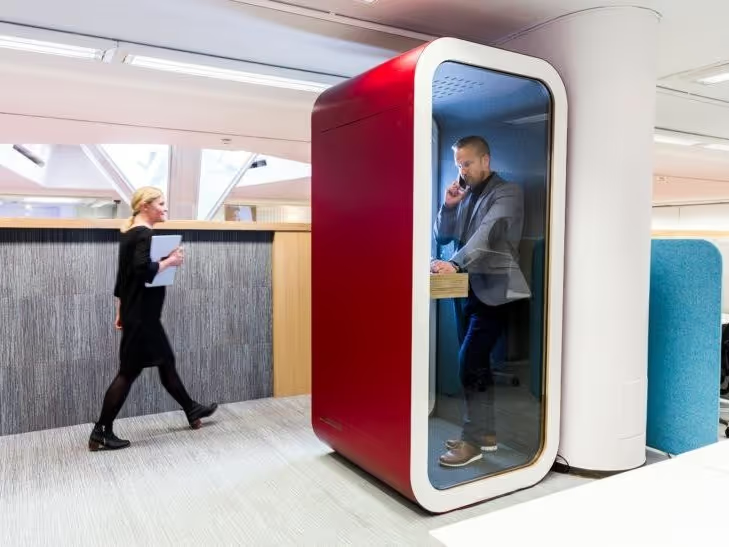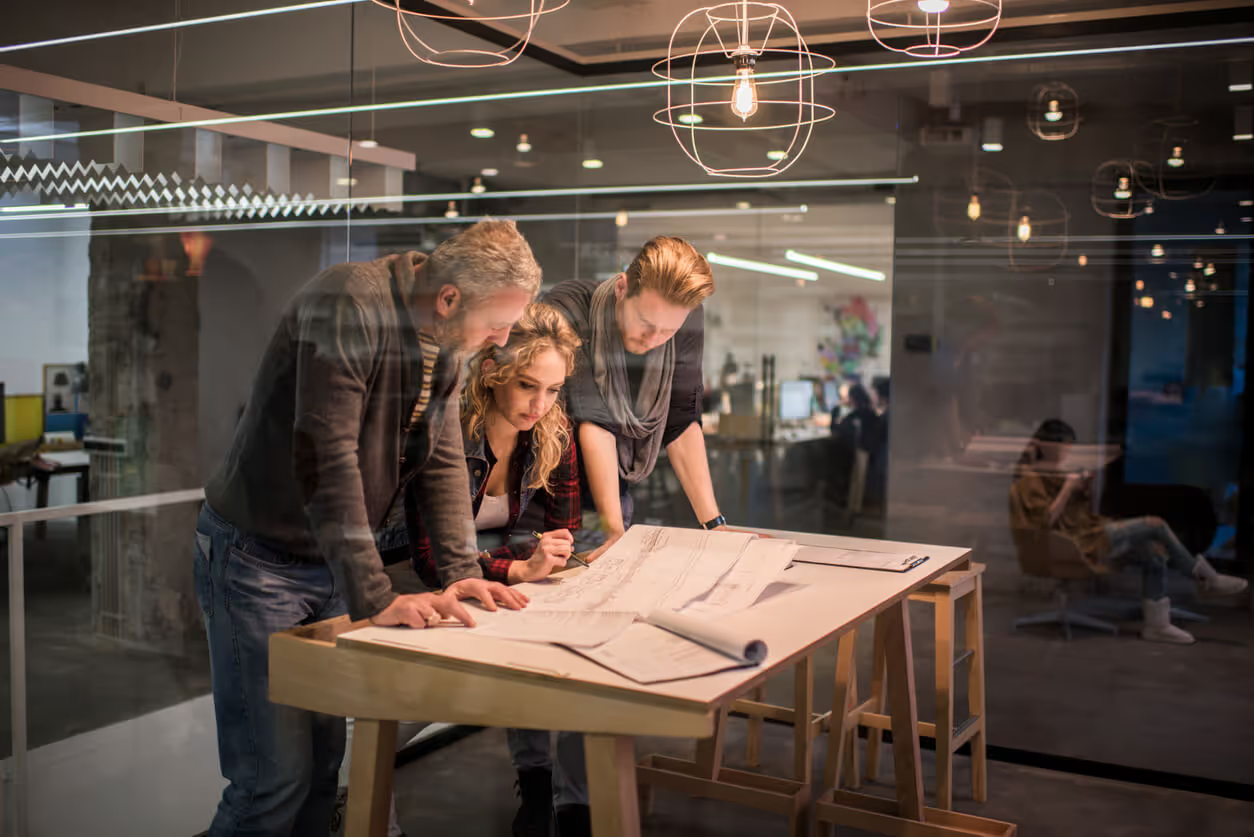Staff fluctuations? End of lease? Or do you just need a more modern, inspiring workspace?
Whether it’s time your office had a bit of a revamp, or time to move, there are a few questions to consider when you’re looking for office design ideas.
Commercial office solutions company SmartSpace has worked with companies on everything from completely new office designs to simple refurbishments. They know first-hand that most issues can be addressed with a well-considered fit-out.
James Dodunski, Managing Director of the company, shares 10 questions he asks clients to consider when thinking about their new office space design.
1) What do you want to achieve with this office space design?
Are you trying to create a better workplace culture? Would you like to encourage more collaboration? Do you need to plan for additional staff in the future? Or do you simply need to make your space work for the next couple of years until the lease is up?

A good office space planning team will prompt you throughout the design process, but to be best prepared, have a look at the way your office functions now and what you’d like to improve. You might be surprised how much the layout of your office affects things like workflow and savings, so don’t be afraid to tell your designer how your dream office would work and ask any questions along the way.
2) Where will your new office space be located?
Are you struggling to hire staff? Have you considered that your location might be an issue?
If you have decided to make a move, it’s important to consider where your new office will be located.
Commercial rents in the CBD are always on the rise, so it can be enticing to look for property further afield. But businesses also need to consider whether staff will find it easy to get to work. There might be a great location for a reasonable price in Penrose, but lack of public transport and increasing numbers of other commuters on the road might not make it worthwhile for your staff.
A better solution might be to consider choosing a smaller, more central space and get creative with how you use it.
For some large businesses, ‘satellite companies’ (having small offices in split locations) is another option. This strategy often appeals to companies who struggle with being based in the CBD due to the increasingly bad Auckland traffic and the effect it has on staff. Splitting the office in this way needs careful consideration, as one central location can be more beneficial for company culture.
3) How will you cater to different staff needs and work styles?
Your workforce will be made up of people with diverse skills and working styles. Some will require quiet areas to be productive, while others will need a place to collaborate and discuss ideas.
Agile-style work systems allow for both of these spaces in one office and empower your staff to choose where and how they work depending on their needs.

Options include focus booths for groups to collaborate, sit-stand desks for those who require movement, break-out zones for a more relaxed working style, and quiet zones for those who prefer to work more traditionally.
As James explains: “Gone are the days of fixed desks – we now come to work and have the choice to work where we please.”
4) Do you want to go completely agile and open plan?
The beauty of agile work systems is that they can easily be incorporated into otherwise traditional offices to whatever extent you wish. They still prove to be just as effective – it just requires some clever office space planning.
There will always be some staff who would rather work more traditionally or, due to their line of work, require that their belongings and work tools stay in one place.
In some cases, perhaps you’d like to keep management zones separate from the open plan space. Or maybe your budget only allows for minimal changes.
SmartSpace is an industry leader in creating the perfect balance between agile and traditional work systems, allowing for optimal flow between the two work styles.
A mixture of the styles can also be a way to utilise existing office furnishings and keep expenses down. For example, SmartSpace’s recent refit of AA Insurance incorporates both old and new pieces for the perfect blend of fixed and agile work styles.
5) How do you want to create private spaces?
Agile and open plan offices encourage collaboration, but many employees and employers may be concerned about loss of privacy. It is essential to think about this in your office design to ensure staff wellbeing.
Fortunately, new technologies allow for dramatic enhancements in staff privacy.
Break-out spaces in your office design can be a simple way to allow staff to get away from their desks for conversations or solo working. Or, for the utmost in confidentiality, options like the Framery O Booth provide complete solitude and audio isolation. These are perfect for sensitive phone conversations and video calls.
6) How much space does your team need?
With traditional fixed-style desking, office space planners used to allow for 7-12 sqm per staff member.
Agile work systems allow for much less, and take into consideration the percentage of staff who will actually be present. This results in huge overhead savings for your business.
Providing a flexible workspace where staff can stand or sit, work alone or together, or even work remotely can literally cut the amount of office space required – as well as your rent – in half

As James explains: “The way offices work now is that on any given day there’s 60% to 65% attendance. Some staff are holiday, some are sick, and some are on site or visiting clients. That’s what drives agile work systems – you can make more out of a space if it’s flexible and you know not all of the people are there all of the time. This means you only need to pay 65% of the rent.”
It can be tricky to correctly calculate the amount of space your office actually needs, as explained in the article “Should I stay, or should I go?”. We recommend calling in a professional for help with your office space planning.
7) How can you make sure your space is flexible/prepared for growth and change?
If you keep your workspace flexible, your office will be better prepared for fluctuating staff numbers. Flexible and agile work zones can cater for larger groups of people in smaller areas. And if you have the option of remote working for staff, any sudden need for dramatic increase in employees – contract or otherwise – is much easier to manage.
Smart systems such as FloorSense can track and provide real-time data on staff attendance. They also show which work zones are preferred, so you can ensure your fit-out is suited to staff requirements at all times.
Another option to reduce your capital expenditure on a move is to lease your office furniture and equipment through SmartLease. Lease options are also 100% tax deductible.
8) Will this space be visited by clients?
If your office is likely to be visited by clients and guests, you’ll need to factor this into the design of the workspace.
Your reception area is your first chance to impress. A modern and relaxing space can easily be created with some well-placed, comfortable soft seating.
If visitors will need to walk through the main work area to get to a meeting room, consider how this might affect staff. Perhaps design any open-plan areas around the thoroughfare, or consider partition walls on desks so staff can keep their privacy and focus.
Having unfixed workstations also means unfixed storage, so consider providing staff with agile bags or accessories to carry their belongings to prevent unnecessary mess.
9) What do you want your office space to say about your company?
What your office looks like isn’t only important to visitors; it’s also hugely important to staff. Providing a visually stimulating space with modern facilities can help inspire employees and make them feel they are part of something ‘bigger’.
Creating a space where employees have options to address their needs also creates a good work culture. Quiet spaces, focus booths, or simply just having a modern and comfortable office to work from can significantly increase staff wellbeing at work.
10) Is sustainability important to your business?
It’s rare to see a company that doesn’t consider sustainability in the way they operate. Work systems and facilities are no different.
Ensuring that technological assets such as computers and printers have a low carbon footprint, or installing technology that allows for cloud-based storage and sharing, are great ways to ensure your business is operating sustainably.
When designing a new office space, it’s also easy to install technology to manage things such as energy and water usage.
If you want to encourage recycling among staff, make sure facilities are available for them to do so easily. You can also check your office furnishings come with green certification such as an EnviroSpec verification and/or proof of recyclable content.
If you have further questions about what you need to consider in your new workplace design, or are unsure how to create the perfect space for your employees to thrive, get in touch with SmartSpace to see what solutions might be right for you.
Tagged: Office design ideas, office space design, office fit out


.svg)

.svg)


